Digital Poster
fMRI Analysis: Software, Pipelines & Methods
ISMRM & ISMRT Annual Meeting & Exhibition • 10-15 May 2025 • Honolulu, Hawai'i

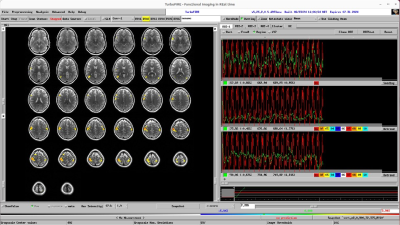 |
Computer Number: 81
2341. A
Software Platform for High-Performance Real-Time Resting-State
fMRI Analysis
S. Posse, K. Rosenberg, k. Talaat, J. Zhang, C. Tatsuoka, J.
Dilts
University of New Mexico, Albuquerque, United States
Impact: This study demonstrates advances in seed-based
real-time resting-state fMRI analysis for high-speed data
acquisition that approach the performance and utility of
conventional offline resting-state fMRI analysis toolboxes.
|
|
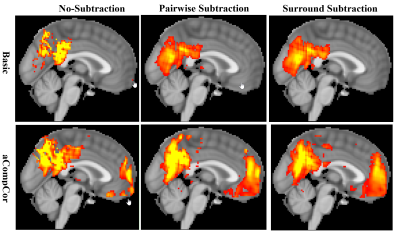 |
Computer Number: 82
2342. Developing
an Efficient Pipeline for Accurate ASL MRI Functional
Connectivity Analysis
H. Rahimzadeh, J. Guo
University of California, Riverside, Riverside, United States
Impact: This optimized ASL MRI pipeline enables more
accurate functional connectivity analysis, benefiting
neuroscience research and potential clinical applications by
providing improved brain connectivity measurements for
studying network abnormalities in neurodegenerative and
psychiatric conditions.
|
|
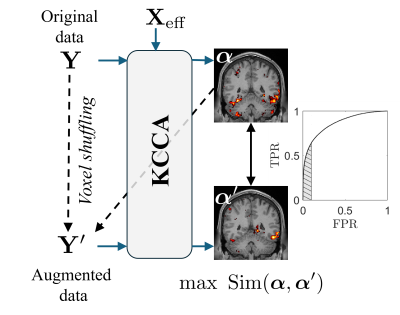 |
Computer Number: 83
2343. A
Self-Supervised Voxel Shuffling Framework for Kernel-Based fMRI
activation detection
C. Han, Z. Yang, X. Zhuang, D. Cordes
Cleveland Clinic, Las Vegas, United States
Impact: The proposed augmentation method effectively
finds the optimal kernel mapping and mitigates overfitting
in activation detection without relying on spatial ground
truth information. This could be used in real fMRI data and
broaden the potential for modeling more complex
relationships.
|
|
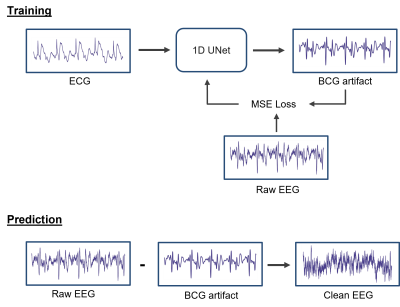 |
Computer Number: 84
2344. BRNet:
Ballistocardiogram Artifact Removal in EEG Acquired Inside MRI
via Deep Learning
I-C WANG, T-Y Huang, H-J Lee, F-H Lin
Department of Electrical Engineering, National Taiwan University of Science and Technology, Taipei, Taiwan
Impact: Enhances EEG data quality in MRI environments,
improving reliability in neuroscience research and clinical
diagnostics.
|
|
 |
Computer Number: 85
2345. Multimodal
Analysis of Autonomic Regression on Neuronal and Physiological
Correlates
K. Eren, L. Alqam, B. Tavashi, C. Karakuzu, K. Yildirim, E.
Can, A. Dincer, P. Ozbay
Boğaziçi University, Istanbul, Turkey
Impact: By integrating autonomic corrections into fMRI
workflows, this study enhances the accuracy of brain
activity measurements, providing a clearer understanding of
neural dynamics during cognitive tasks.
|
|
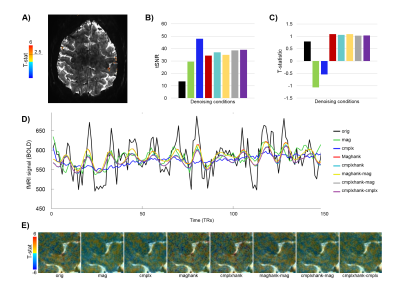 |
Computer Number: 86
2346. Voxel
And Vicinity-based algOrithm for nOise reductiOn of fMri data
sets (VAVOOOM).
A-M Oros-Peusquens*, P. Pais-Roldan*, S. D. Yun, N. J. Shah
Forschungszentrum Jülich, Jülich, Germany
Impact: The presented denoising method (VAVOOOM) can be
implemented in pre-processing pipelines to improve the tSNR
and facilitate accurate characterization of fMRI metrics in
high-resolution data such as laminar resolution fMRI at
ultra-high fields.
|
|
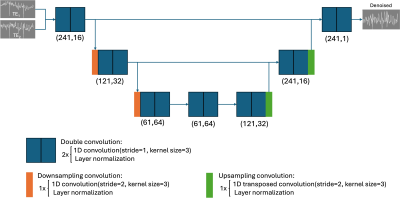 |
Computer Number: 87
2347. Introducing
ME-DUNE, a denoising U-network applied in a task based
multi-echo fMRI study.
P. Van Schuerbeek, M. Roose, H. Raeymaekers, M. Naeyaert
UZ Brussel (VUB), Brussel, Belgium
Impact: As a first step in the development of a new
denoising technique that is not ICA-dependent, this work
showed the potential of using an U-convolutional network to
denoise multi-echo fMRI data as an alternative to ICA-based
methods.
|
|
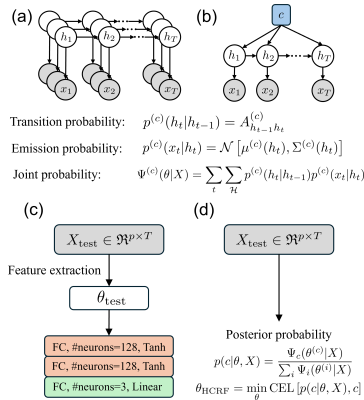 |
Computer Number: 88
2348. Class-Aware
Hidden Markov Model for simultaneous functional connectivity
estimation and classification
C. Han, P. Pattiam Giriprakash, R. Nandy, D. Cordes
Cleveland Clinic, Las Vegas, United States
Impact: For fMRI classification problems, the one-step
Class-Aware HMM is simpler and more accurate compared to
two-step classification while maintaining model
interpretability. This could help in understanding brain
connectivity and disease diagnosis.
|
|
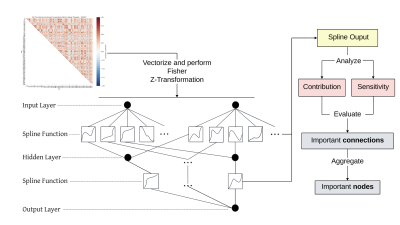 |
Computer Number: 89
2349. Decoding
Task-Based Functional Connectivity: Exploring Kolmogorov-Arnold
Networks for Task-Evoked fMRI Classification
Y. Chen, Z. Tang, T. Chen, X. Wang, Y. Sun, C. Tjoean, J.
Lv, M. Barnett, F. Calamante, M. Irish, W. Cai, C. Wang
The University of Sydney, Sydney, Australia
Impact: This study demonstrates that the
Kolmogorov-Arnold Network offers strong interpretability for
fMRI task-condition classification, aligning with literature
on the functional roles of specific brain regions. This
advances task-based fMRI analysis and supports the
development of explainable neural networks in neuroscience.
|
|
 |
Computer Number: 90
2350. Precision
Functional Gradients via Optimal Shrinkage Denoising
J. Mao, K. Huynh, K-H Thung, H. P. Taylor, G. Lin, S. Ahmad,
P-T Yap
University of North Carolina at Chapel Hil, Chapel Hill, United States
Impact: Denoising enables high-quality individual
gradients, even with temporally undersampled data, allowing
precise assessment of individual gradient changes.
|
|
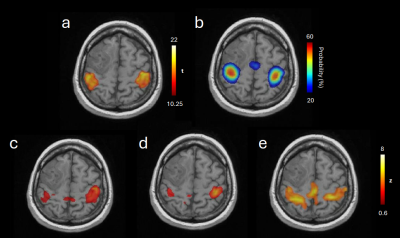 |
Computer Number: 91
2351. Implementation
of automated resting-state presurgical fMRI analysis pipelines
with patient-based probabilistic functional atlases
K. Tran, J. M. Teo, V. Kumar, M-L Jen, C. Elsinger, H-L Liu
NordicNeuroLab Inc., Milwaukee, United States
Impact: This work developed software that automates
rs-fMRI analysis by implementing probabilistic functional
atlases in SBC and ICA pipelines. It supports routine
clinical use of rs-fMRI for presurgical mapping of motor,
visual, and language areas for patients undergoing brain
tumor resection.
|
|
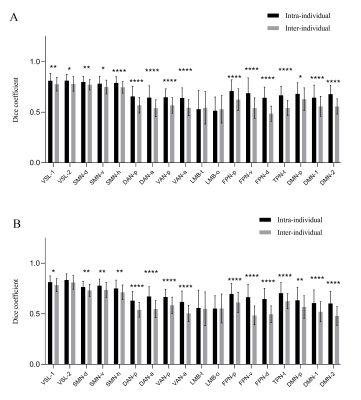 |
Computer Number: 92
2352. Consistency
and stability of individualized cortical functional networks
parcellation at 3.0 T and 5.0 T MRI
M. Yu, B. Rao, Y. Cao, L. Gao, H. Li, X. Song, H. Xu
Zhongnan Hospital of Wuhan University, Wuhan, China
Impact: Obtaining functional atlases at individual level
is important to explore individual brain function and for
precision personalized medicine. This study laid the
foundation for future application of individualized cortical
functional networks parcellation at 5.0 T and other
ultra-high field MR.
|
|
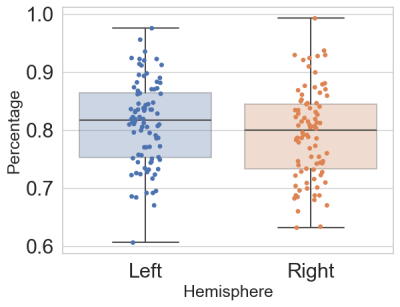 |
Computer Number: 93
2353. Dynamic
autocorrelation as a tool to measure time-dependent changes in
neuronal time-scale along the hippocampus axis during
resting-state.
A. Golestani, L. Homann, N. Bouffard, M. Moscovitch, M.
Barense
University of Calgary, Calgary, Canada
Impact: We introduced dynamic autocorrelation (dAC) as a
measure to investigate dynamic changes in AC patterns and
demonstrated that the AC pattern is dynamic during
resting-state. The dAC provides a promising approach to
examine how neural timescales adapt to environmental
changes.
|
|
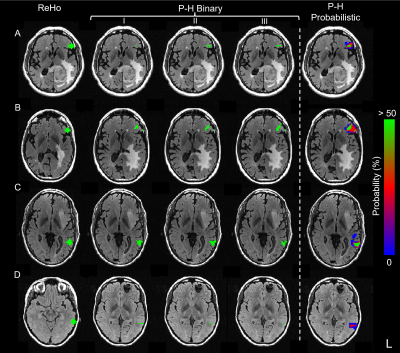 |
Computer Number: 94
2354. Deducing
Resting-State fMRI Seeds with Manifold Learning and Distance
Clustering.
J. M. Teo, V. Kumar, K. Noll, S. Ferguson, C. Ene, S.
Prabhu, M. Wintermark, H-L Liu
The University of Texas MD Anderson Cancer Center, Houston, United States
Impact: Personalized SCA with P-H method and
probabilistic seeds improves the accuracy of detecting the
rs-fMRI language network in brain tumor patients. This can
facilitate clinical adoption of rs-fMRI for patients needing
presurgical language localization but have limited tb-fMRI
results.
|
|
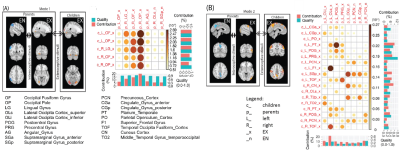 |
Computer Number: 95
2355. Brain-to-brain
communication channels and information content
R. Lee, P. Sajda, N. Tottenham
University of Texas Health Science Center at San Antonio, San Antonio, United States
Impact: A novel approach was developed to identify both
brain-to-brain network communication channels and the
information content in each channel. The characteristics of
the channels and the information flows in parent-child
eye-contact quantify both social interaction and children’s
brain developmental stages.
|
|
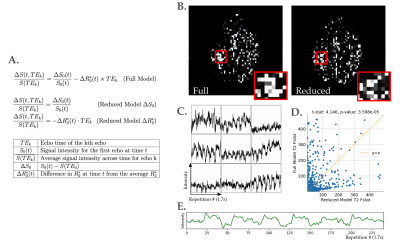 |
Computer Number: 96
2356. Adapting
the Tedana Multi-Echo Denoising Pipeline for Echo Planar
Time-Resolved Imaging (EPTI)
K. Lamar-Bruno, F. Wang, Z. Dong, R. Barnes, C. Chen, D.
Handwerker, T. Liu
University of California, San Diego, La Jolla, United States
Impact: We adapted the Tedana pipeline to ensure
accurate denoising of EPTI data and leveraged EPTI’s high
echo count by no longer assuming that BOLD and non-BOLD
related signal changes are uncoupled thus improving Tedana’s
accuracy for EPTI.
|
The International Society for Magnetic Resonance in Medicine is accredited by the Accreditation Council for Continuing Medical Education to provide continuing medical education for physicians.